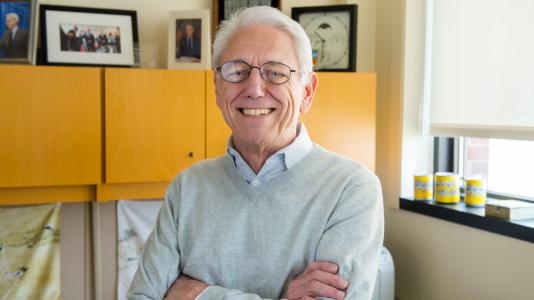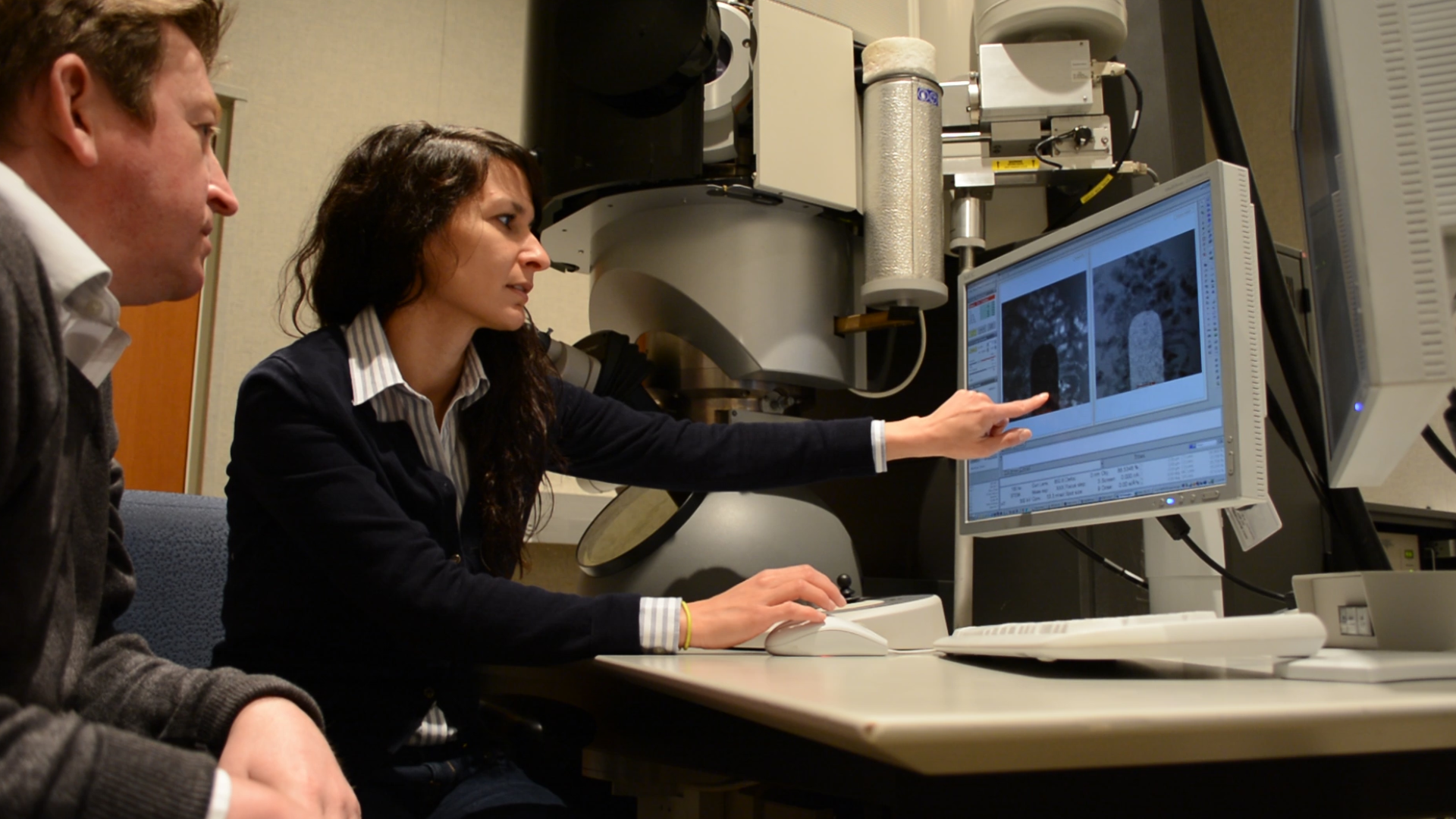
Today’s lithium-ion batteries hold more than twice the energy of those released in 1991, and they continue to improve. But even when brought to their full theoretical energy storage potential, lithium-ion batteries fall short of some of our energy storage needs. Next-generation batteries are necessary to meet these needs.
For this reason, the Joint Center for Energy Storage Research (JCESR), a U.S. Department of Energy (DOE) Innovation Hub led by Argonne National Laboratory, looks exclusively beyond lithium-ion. With JCESR at its halfway point, 2 1/2 years into its five-year charter, this is a good time to step back and look at the big picture: how far we have come, what we have learned and where we are going.
Looking Back
We launched JCESR with a bold vision: to create game-changing next-generation battery technologies that will transform the transportation sector and the electric grid the way lithium-ion batteries transformed personal electronics. This bold vision addresses pressing national needs to reduce carbon emissions, increase energy efficiency, lower our dependence on foreign oil, accelerate deployment of renewable solar and wind electricity on the grid, and modernize the grid with new operating concepts that strengthen its flexibility, reliability, and resilience.
Next-generation energy storage could meet these needs for transportation and the grid with a single dramatic innovation: batteries that deliver five times the energy density at one-fifth the cost. Such batteries would allow inexpensive electric cars to drive five times farther on a single charge, rivaling the 400-mile range of conventional gasoline cars, and they would make storing and releasing electricity on the grid just as cheap as generating it with natural gas turbines.
Next-generation storage has the potential to replace traditional, century-old fossil fuel technologies with newer, more sustainable, and cleaner alternatives. The market implications are equally impressive: transportation and the grid account for nearly 70 percent of U.S. energy use, compared to 2 percent for personal electronics powered by today’s lithium-ion batteries. In energy terms, next-generation batteries could have at least 10 times the market reach of today’s batteries. In dollars and cents, channeling half the transportation and grid energy through storage would create a market 10 times larger than personal electronics powered by lithium-ion batteries, which currently stands at $15-$20 billion.
Where We Stand
For the past 2 1/2 years, we have been pursuing three energy storage concepts: “multivalent intercalation,” which involves replacing singly charged lithium ions with doubly or triply charged working ions; “chemical transformation,” that improves how we store energy in chemical bonds; and “redox flow,” whereby energy is stored in liquid electrodes.
The first concept would create high-capacity, high-voltage batteries using multivalent intercalation. Replacing lithium ions, which carry a single positive charge (Li+), with ions having two or three positive charges could increase the battery energy storage capacity by a factor of two or three. We conducted a computer-driven screening of 1,800 candidate multivalent host structures, the largest such systematic survey ever undertaken. This effort identified the most promising ions as calcium and magnesium, both of which have a two-plus charge (Ca2+ and Mg2+).
Moving from the computer to the laboratory, we then demonstrated that the Mg2+ ion could be inserted into and released from manganese oxide spinel cathodes. This discovery is the first substantive experimental evidence that the multivalent battery could one day reach its theoretical promise. Just as important, we have gained a fundamental understanding of the molecular-level interactions that govern the properties of multivalent electrolytes.
For the second concept, careful design studies using techno-economic modeling showed that storing energy in lithium-oxygen chemical bonds is less feasible than previously thought because of the cost and energy density penalty of dealing with a high-purity gaseous oxygen electrode. We thus decided to shift emphasis from lithium-oxygen to lithium-sulfur, focusing on developing a viable lithium metal electrode and preventing the polysulfide intermediates that form in the cathode from migrating to the anode and discharging the battery.
The classic challenge for lithium metal anodes is the growth of dendrites, which reach across the electrolyte and short out the cathode, severely shortening the life of the battery. JCESR researchers have reported on a new electrolyte that suppresses dendrite growth over thousands of charge-discharge cycles. In addition, techno-economic modeling indicated that high sulfur concentration compared with the volume of electrolyte in the lithium-sulfur cell (a “lean” electrolyte) is a promising route to achieve JCESR performance and cost targets.
For the third concept, we have been investigating the replacement of solid electrodes with energy-dense liquids that charge and discharge as they flow through the battery. These “redox flow batteries” store large amounts of energy inexpensively and are well suited to the grid. A critical component is the separator between the positive and negative liquid electrodes. We developed new concepts for flow batteries — storing energy in liquid suspensions containing polymer or colloid active materials up to a micron in size, which are easily separated by a standard off-the-shelf membrane.
To measure progress, we have created a set of metrics that will track the ongoing productivity of JCESR over the course of the remainder of the project. The report card to date looks like this:
- Published more than one hundred journal articles. In the last year, the ISI Web of Science has designated 13 JCESR publications as “Highly Cited Papers.”
- Filed 28 invention disclosures as part of the patent application process
- Calculated key properties of more than 16,000 candidate organic molecules for use in electrolytes and as active materials in flow batteries, the analysis of which is being used to guide future research directions
- Completed seven techno-economic modeling studies, the projections from which have guided the research directions on the three storage concepts
- Designed five research prototypes suitable for testing
- Held seven regional outreach events
Looking Ahead
Halfway through our first five years, we see the need and opportunity to focus more strategically and intently on achieving our three legacies:
- A library of fundamental science of the materials and phenomena of energy storage at the atomic and molecular level;
- Two prototypes, one for transportation and one for the grid that, when scaled to manufacturing, have the potential to deliver five times the energy density at one-fifth the cost; and
- A new paradigm for battery R&D that integrates discovery science, battery design, research prototypes, and manufacturing collaboration in a single highly interactive organization.
We have already launched our new paradigm, which integrates talent from 20 partner and funded collaborator organizations, comprising more than 180 researchers including students, postdocs, early career researchers, senior scientists, and engineers. This team provides a critical mass large enough to embrace the full spectrum of diverse disciplines and specialties needed to pursue beyond-lithium-ion battery R&D.
JCESR’s new paradigm takes mission-driven research implemented through strategic planning and nimble change as its guiding principles, based on frequent and regular in-person communication at all levels. We have continuously refined our new operational paradigm since its introduction 2 1/2 years ago, as we identify structural and functional challenges and opportunities.
In the coming 2 1/2 years, we will narrow our focus through “convergent” research, focusing on the most promising proof-of-principle prototypes that can be transitioned to manufacturing. JCESR’s increased focus on strategy may require shifting resources to implement our strategic directions.
As part of our strategy, however, we will also continue to emphasize exploratory or “divergent” research on alternative approaches for prototypes, knowing from experience in battery R&D that many excellent ideas fail for collateral reasons, often driven by the diversity of competing side chemical reactions that inevitably occur at electrochemical interfaces. JCESR intentionally maintains a strategic portfolio of divergent and convergent research so that alternate approaches are readily available to move into convergent positions when our most promising directions encounter unexpected challenges.
Outlook
At this the halfway point, we have an impressive record of accomplishment, and we are finalizing the strategic research directions likely to bear fruit for each of the three energy storage concepts and for achieving our first two legacies. In the next two years, these exciting research directions for science and prototypes will take shape and mature. Stay tuned.
Argonne National Laboratory seeks solutions to pressing national problems in science and technology. The nation’s first national laboratory, Argonne conducts leading-edge basic and applied scientific research in virtually every scientific discipline. Argonne researchers work closely with researchers from hundreds of companies, universities, and federal, state and municipal agencies to help them solve their specific problems, advance America’s scientific leadership and prepare the nation for a better future. With employees from more than 60 nations, Argonne is managed by UChicago Argonne, LLC for the U.S. Department of Energy’s Office of Science.
The U.S. Department of Energy’s Office of Science is the single largest supporter of basic research in the physical sciences in the United States and is working to address some of the most pressing challenges of our time. For more information, visit the Office of Science website.
The Joint Center for Energy Storage Research (JCESR), a DOE Energy Innovation Hub, is a major partnership that integrates researchers from many disciplines to overcome critical scientific and technical barriers and create new breakthrough energy storage technology. Led by the U.S. Department of Energy’s Argonne National Laboratory, partners include national leaders in science and engineering from academia, the private sector, and national laboratories. Their combined expertise spans the full range of the technology-development pipeline from basic research to prototype development to product engineering to market delivery.
